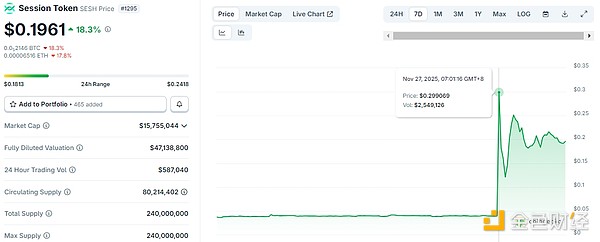SEC, CFTC Pledge Closer Cooperation, ‘Harmonization’ on Crypto and Market Oversight
The U.S. Securities and Exchange Commission (SEC) and the Commodity Futures Trading Commission (CFTC) said Monday they will work more closely together, beginning with crypto markets, in an effort to reduce duplication and regulatory conflict.
The pledge came after a joint regulatory roundtable in Washington, D.C., and marks what leaders described as a turning point for American financial oversight.
“For too long, the SEC and CFTC have operated in parallel lanes, too often in conflict with one another, leaving the American public to bear the costs of duplication, delay, and uncertainty. That era is behind us,” SEC Chair Paul Atkins said in prepared remarks. “We are charting a new course, one that will solidify America’s position as the world’s financial leader.”
Today, we hosted a joint roundtable with @CFTC on regulatory harmonization. I look forward to working with my counterparts across the Administration to ensure the SEC and CFTC operate side by side so that American innovation and investment can thrive. https://t.co/Z3L7VO2FaV pic.twitter.com/vPaQmwlA5i
— Paul Atkins (@SECPaulSAtkins) September 29, 2025
Crypto policy shifts
The announcement follows a shift in Washington’s posture toward crypto markets over the past year, with the return of the Trump administration pushing regulators to ease restrictions on digital assets.
Since early 2025, the SEC and CFTC have floated proposals to expand market trading hours to a 24/7 schedule, introduce regulatory exemptions for decentralized finance projects, and allow spot crypto assets to trade directly on U.S. exchanges. At the same time, the SEC has dismissed multiple enforcement actions against crypto firms, including Kraken, Cumberland and ConsenSys, signaling a broader pivot away from the aggressive crackdown that defined the Gensler era.
SEC Commissioner Mark Uyeda additionally emphasized the need for clearer lines of oversight as markets evolve. “Innovation rarely respects jurisdictional lines and often does not fit neatly into the statutory distinctions between ‘securities’ and ‘commodities’ written decades ago,” he said.
“Today, we have an opportunity to avoid the mistakes of the past and instead, together, build a regulatory architecture that evolves with our markets — not against them.”
The SEC has previously pledged to implement an “innovation exemption” for certain digital assets by year’s end as part of “Project Crypto,” an SEC initiative to lower regulatory burdens.
CFTC Acting Chair Caroline Pham echoed the call for collaboration, while pushing back on criticism of her agency’s work. “In recent years, the dynamic between our agencies could be described as one of competition rather than collaboration. That is not what this Administration wants. It is not what we want,” she said. “The CFTC is alive and well, and there needs to be no more FUD about what’s happening on the other side of town.”
Meanwhile, the CFTC under Pham has increased its pace of enforcement and rulemaking actions, which she highlighted as proof the commission remains fully engaged.
Disclaimer: The content of this article solely reflects the author's opinion and does not represent the platform in any capacity. This article is not intended to serve as a reference for making investment decisions.
You may also like
Bitcoin security reaches a historic high, but miner revenue drops to a historic low. Where will mining companies find new sources of income?
The current paradox of the Bitcoin network is particularly striking: while the protocol layer has never been more secure due to high hash power, the underlying mining industry is facing pressure from capital liquidation and consolidation.

What are the privacy messaging apps Session and SimpleX donated by Vitalik?
Why did Vitalik take action? From content encryption to metadata privacy.

The covert war escalates: Hyperliquid faces a "kamikaze" attack, but the real battle may have just begun
The attacker incurred a loss of 3 million in a "suicidal" attack, but may have achieved breakeven through external hedging. This appears more like a low-cost "stress test" targeting the protocol's defensive capabilities.


